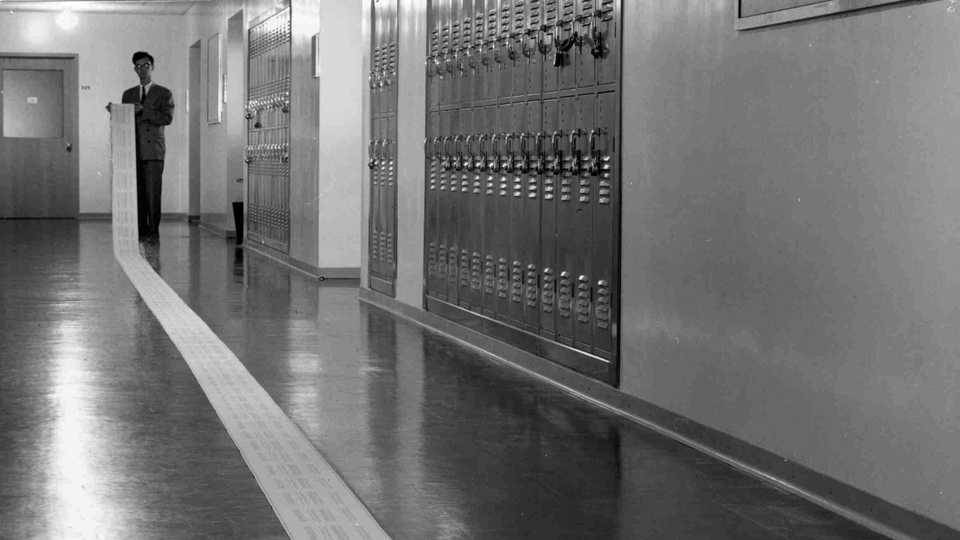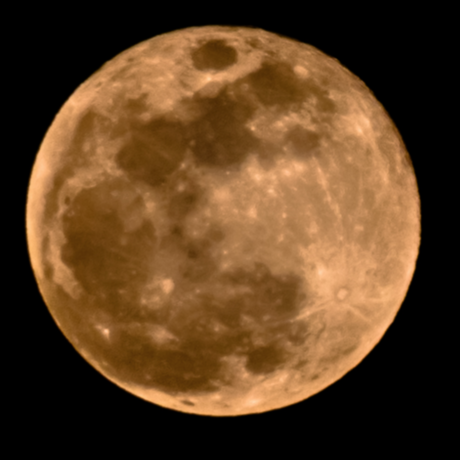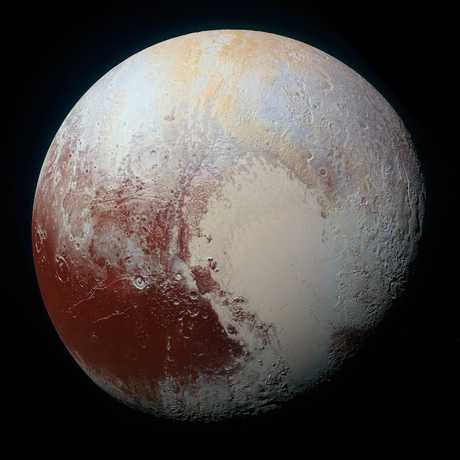Each month, renowned astronomers share their latest research at Morrison Planetarium.
Science News
Thoughts from a Planetarian: Why digital planetariums are better
I’m not going to make friends with this post. And, to that point, the opinions below are mine and mine alone and you’re free to disagree with any or all of them (you probably shouldn’t though).
Most of the questions I get are about space stuff, but not all. One of the questions I get often is about what happened to the old Morrison star projector after we stopped using it (we still have it; it’s part of our collection now), which inevitably leads to questions about why we don’t use it anymore. We even get some complaints every now and again that we’re just like a movie theater now and that they wished we still used the old setup. So I’d like to address that issue now.
First, some definitions. When I talk about opto-mechanical star projectors, I am talking about the traditional star-ball style with the motors and lenses and a bajillion gears and constant adjusting. They use the known properties of celestial objects and precision machining to recreate a night sky. The best also included additional mechanisms to show the planets and their orbits, constellation lines, and even more transient objects like comets.
This is in contrast with digital projectors (a.k.a. video projectors), which use a computer to produce an image and then project it onto the screen. Our projectors are able to show any kind of image or video we would like, provided we can output it from our computers (which means six 4k resolution video outputs).
We here at Morrison Planetarium are fully digital nowadays (we use six projectors to display about 30 million pixels on our dome), but prior to the new building, we used an optical projector that we actually built ourselves. It was built just after World War II using a combination of newly-fabricated parts and some materials that were obtained as the result of an agreement between the Academy and the U.S. Navy. The main body of the 2.5-ton projector was cast at the Bethlehem Naval Shipyard in San Francisco’s Hunter’s Point, and Navy surplus including aerial reconnaissance camera lenses and gun turret bearings were given new purpose as important components of the star projector. It was able to produce about 3,800 stars—created using hand-placed grains of carborundum grit onto condenser lenses before they were electroplated and the grains removed, but more on that later. I am told that the engineers who built it were the best in the world.
That said, we don’t use it anymore, because optical projectors are fundamentally useless in the modern world. Sorry, that’s not entirely true. They do have a use, and that’s to teach the history of planetariums, and to give a perspective on how terrible life used to be. (Don’t agree? Stay tuned because next week, Morrison assistant director Bing Quock will give us his thoughts on how these projectors are not “useless.”)
See, optical projectors are crippled by their own fundamental nature: the projection they create is programmed through their engineering. Any new feature must be built from scratch and added to the structure itself. Take for example, the constellations. Our planetarium had an additional auxiliary projector that could display pictures overlaid on the stars. If you wanted to add an additional picture (say, an alternative representation of a common constellation), you would create (or commission) a drawing specific for the projector, then calibrate and line up your picture with the stars (good projectors helped with that part). If you wanted to show multiple pictures you’d need to have multiple slides and swap them out (or build something automated to do that for you). The consequences are pretty rough: adding the thousandth image is just as hard as adding the tenth, or third. In fact, each of the aforementioned 3,800 stars in our projection was at some point a grain of grit, carefully selected by size, painstakingly placed by hand on a lens. It took Frances Greeby six months to finish.
Now, you could argue that carefully programming software to accurately handle 4,000 data points takes just as much work, and you might be right. But any number of planetariums can benefit from that work. And, if built correctly, adding additional data can be trivialized.
And that’s for stuff that is easy to do with an optical projector. What if you want to show a passing comet? The three-dimensional structure of our solar system? Or an entire galaxy? The solutions that planetarians came up with (seriously, take a look at this PDF full of designs) were incredible, even if the results were not. To show auroras, we here at Morrison used to project a static image (using one of these babies) of an aurora through a slowly rotating disk of plastic that we partially melted with an iron. And for what? So we could show a poor simulacrum of an aurora for someone who had never seen it before?
What a waste of time. You want to know what an aurora looks like? Try this.
Is the “shine a picture through melted plastic” method clever? Absolutely. Is it effective? Arguably. Is it better than a two-second internet search? Not even remotely.
And digital systems are significantly faster at keeping up with new discoveries, especially for smaller domes that don’t have a team dedicated to that task. There are robust “user groups” in the planetarian community where ideas, content, and assets are shared freely—often using real data. With some of the tools out there it’s as easy as dragging a few files to an application folder—you don’t even have to break out your table saw and soldering iron if you don’t want to.
But even if they were better at showing auroras, or showing the stars or whatever, they still fall short where it really matters (there are those that say you need an optical setup to get a true night sky experience).
Projecting something that moves and changes used to be difficult. It’s now so trivial that it’s not remotely interesting anymore. We just finished hosting a VR experience where you shrink down to two inches tall and swim through the ocean, push jellyfish around, and get swallowed by a whale shark. Imagine telling a kid who has grown up with computers and projectors in every classroom that making a bunch of dots appear on the ceiling is actually a really big deal and that they should care that an optical projector can make a slightly darker black than the digital one.
Modern planetariums do not, and should not, just simulate a view from Earth. Forty years ago if you were curious about the stars, then yes, a planetarium might be the best place to go learn about them—your alternative was to go to a library or call a professor or something (or maybe even go outside with a telescope). We’re so far beyond that now. If you’re curious about something you just Google it. An action so ubiquitous we verbed it. If the goal of a planetarium was just to deliver knowledge about space, we’d lose to Wikipedia 100 percent of the time. But thankfully that’s not the point of them anymore (if it ever even was).
Planetariums are about making a connection to science by being immersed in it—surrounded by it. Now certainly they started with just showing a night sky, but only because that was all they could do. We didn’t have the technology back then to simulate traveling up the vascular system of a fir tree, or watch a meteor explode.
Now that we aren’t so limited we can push planetariums further than we have ever before. They’re a place to go to get a perspective you can’t get anywhere else—of a flyby of Pluto, of an entire galaxy, of the inside of a coral polyp, and yes, even the feeling of standing out on a mountaintop with a clear sky above you. We didn’t lose anything, and we gained so, so, so much more.
Whew!
This is the longest article I have written thus far, and through writing it I’ve found that I have a lot more to say than I anticipated. But I think it’s because when a guest says, “I wish you still had the old style of projector,” they’re missing the point of planetariums entirely! We didn’t show the night sky to educate you about the constellations, or about the planets. We didn’t spend countless hours carefully placing grains of grit on a lens so that you could count them all or memorize their names. We did it so that you would feel connected to something you might rarely or never experience directly. That’s the point, and we didn’t lose it when we upgraded to new technology, and to say that we are worse now because we upgraded is to say that we failed the first time. They didn’t connect with the stars, they connected with the star ball.
I don’t know what planetariums will look like in 30 years—nobody does. The introduction of computers has changed everything. Morrison Planetarium will continue to grow to bring people and science together as directly as we can—even if that means changing the fundamental nature of the planetarium again. I hope, if nothing else, that people don’t feel like we broke the connection they made with science when we get there.
[Editor’s note: Stay tuned for a rebuttal and argument why optical projectors are still relevant, coming next week.]
Why Thoughts from a Planetarian?

Hello, my name is Ethan, and I work at a planetarium.
Planetariums are a unique interface where the public brushes up against hard science in a very genuine way. As part of my job I get to talk to—and answer questions from—many audiences about astronomy, and I have noticed some things. Some of the reactions I share are well thought out, most aren’t, all I find interesting, and I hope you do too.
Also, we’re trying to build up our web presence, and after looking at the data it seems our most successful articles include pictures or feature employees. So in a desperate cry for attention, here’s both!
The data says this will work.





